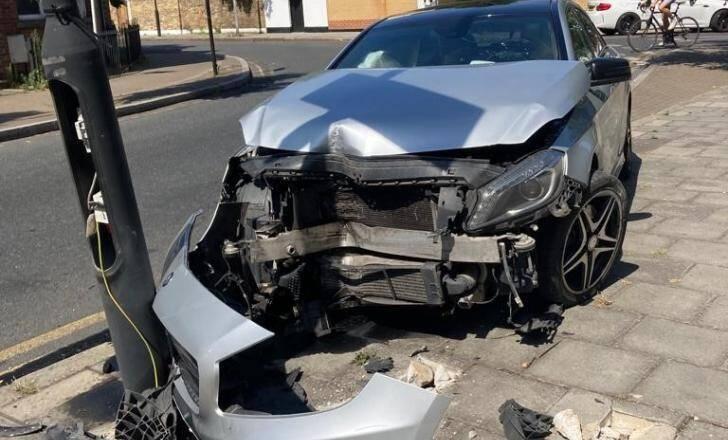
Preliminary data is now being released for the UK’s road safety performance in 2021 from the Department for Transport. The figures indicate that road casualties showed signs of a return to pre-pandemic trends, increasing compared to 2020 when casualty numbers were low. However, it is worth noting that the low casualty figures for 2020 were largely as a result of periods of lockdown resulting in a reduction in road traffic. The data is in marked contrast to that of the US, where road casualty rates increased during the lockdown period of the pandemic and then continued to climb afterwards.
As the first half of 2021 also had a lockdown, the overall figures for 2021 remain lower than pre-pandemic levels. Over the second half of the year, both casualties and traffic returned to levels similar to those in 2019. Monthly changes in casualties during 2021 generally showed a similar trend to changes in motor vehicle traffic levels.
There were an estimated 1,558 reported road deaths in 2021, a decrease of 11% from pre-pandemic levels (2019). There was a rate of 5.2 fatalities/billion vehicle miles in 2021, a higher rate compared with 2019 and a lower rate compared with 2020. Estimates suggest that there were 27,450 people killed or seriously injured (KSI) on UK roads in 2021, a decrease of 11% compared to 2019. There was a casualty rate of 91 KSIs/billion vehicle miles, a similar rate compared with 2019. There was an estimated 128,209 casualties of all severities in 2021, a decrease of 16% compared to 2019, with 425 casualties/billion vehicle miles, a lower rate compared with 2019.
The statistics show that there was an increase in casualties for all main road user types in 2021 compared with 2020. Pedal cyclists showed a reduction in fatalities (21%) following a large increase associated with the pandemic - the opposite pattern to other road user types.
Female fatalities aged 70 and over showed a particularly large reduction compared with prior to the COVID-19 pandemic (a 43% reduction in 2021 compared with 2019).
In 2021 there were an estimated 5.2 fatalities/billion vehicle miles, compared to 5.4 fatalities/billion vehicle miles in 2020 and 5.1 fatalities/billion vehicle miles in 2019. There were an estimated 91 KSIs/billion vehicle miles, compared to 89 KSIs/billion vehicle miles in 2020 and 91 KSIs/billion vehicle miles in 2019. There was an estimated 425 casualties of all severities/billion vehicle miles, compared to 426 casualties/billion vehicle miles in 2020 and 448 casualties/billion vehicle miles in 2019.
Road casualty numbers in each of the last 2 years have been impacted by COVID-19 restrictions, with periods of lockdown associated with reductions in road traffic and casualties.
Fatalities reached their lowest point since the start of the COVID-19 pandemic in February 2021, when they were 57% lower than the 2019 figure. However, following the end of the 2021 lockdown, fatalities increased to levels closer to those seen in 2019.
KSIs and casualties of all severities followed broadly similar patterns to fatalities in 2021, reducing during the period of lockdown, and reaching their highest levels relative to the 2019 average during the second half of the year. Casualties also showed a small downward trend between November and December 2021, whilst there were high levels of Omicron COVID-19 variant transmission and a reduction in road traffic.
Car occupant casualties accounted for 44% of road fatalities and 55% of all road casualties in 2021, and the majority of road collisions involved at least one car.
Pedal cyclist fatalities increased from 2019 to 2020 and then fell in 2021, though remained above the 2019 level. This reflects patterns in cycling, with an increase during the pandemic in 2020, and a subsequent reduction in 2021.
Car occupants, pedestrians and motorcyclists showed the opposite trend to pedal cyclists, with increases in fatalities in 2021 compared with 2020 and decreases compared with 2019.
Figures for 2021 show a higher number of casualties within the ‘other vehicle occupants’ category which is partially a result of increased e-scooter casualties in 2021.
In 2021, 44% of fatalities were car occupants, 23% were pedestrians, 20% were motorcyclists and 7% were pedal cyclists. The biggest percentage change compared to 2020 was for pedal cyclists, which showed a 21% decrease. Meanwhile, the biggest percentage change compared to 2019 was for pedestrians, which showed a 23% decrease
While the highest casualty numbers are for males, and those aged 17 to 29 and 30 to 49, prior to the pandemic there were greater increases in older ages, likely reflecting increases in travel by these age groups.
In 2021: 78% of fatalities and 62% of casualties of all severities were male; 3% of fatalities and 10% of all casualties were aged 16 and under; 26% of fatalities and 30% of all casualties were aged 17-29; 19% of fatalities and 6% of all casualties were aged over 70 and over.
Figures for Great Britain have been among the lowest in the world for many years. In 2021, Great Britain had the fifth lowest rate of road fatalities per million people among European countries with a population over 1 million, behind Norway, Sweden and Denmark and Switzerland.
However, the rate of reduction in Great Britain over the previous decade has been lower than some other countries. The European Transport Safety Council’s Performance Index (PIN) programme enables comparisons of road safety progress between European countries to be made. The latest PIN report covers 2021, and shows that, across the European Union, there was a 31% reduction in fatalities in 2021, compared to 2011. The equivalent figure for Great Britain was a decrease of 18%.








